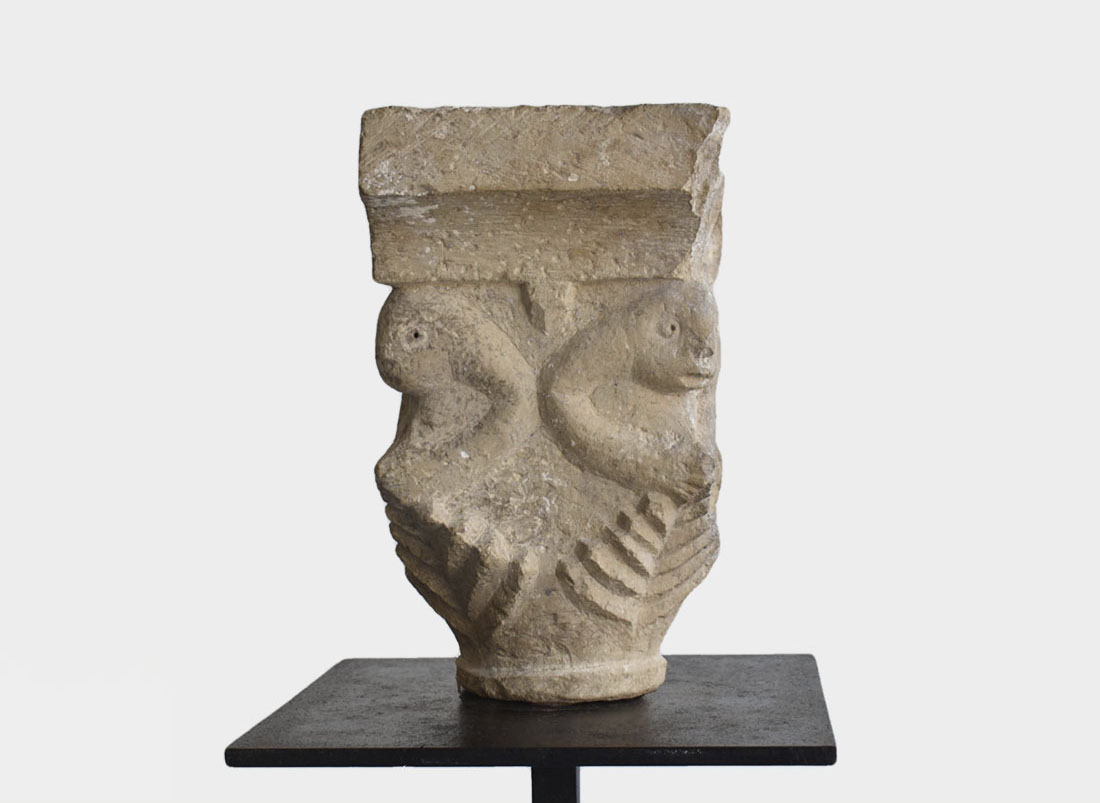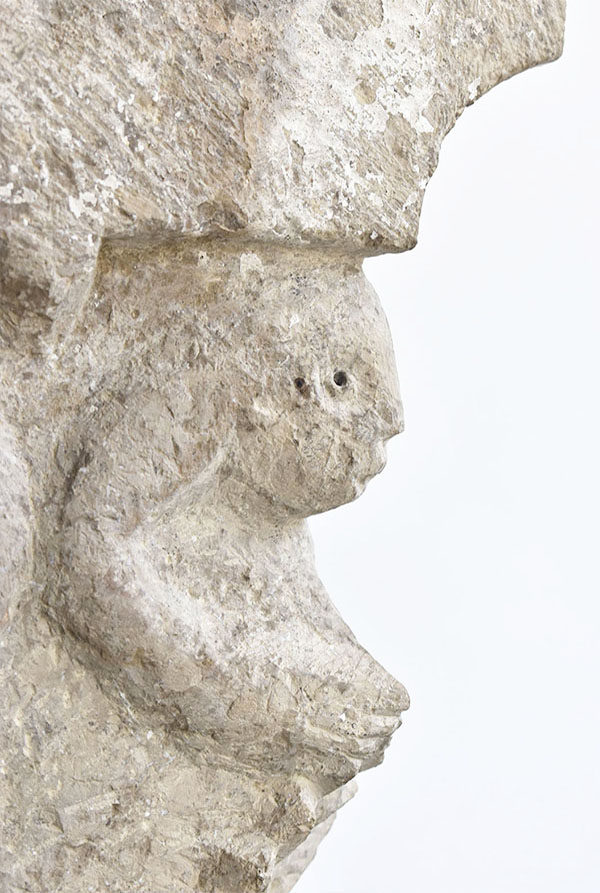CAPITAL ROMANESQUE
13th century

Fantasy figures
During the Romanesque period , ca. 1000-1300, capitals followed Roman examples, still to be seen in many antique structures. Old capitals were highly prized as antiques, collected and reused in romanesque architecture. New is the appearance of little creatures, humans and animals, hidden in the stylised acanthus foliage. Sometimes moving scenes from daily- or biblical life appear next to grotesque fantasy figures, referring to good and evil. The stone used for sculpting the capital (granite or limestone) is to some extent determinative for the stonemason’s possibilities and result.
Cloister arcade
Limestone capital, supported by the original column and base. The abacus is an integral part of this capital. Four boldly carved fantasy creatures with drilled eyes, rise from abstracted foliage on the corners. It is hard to determine whether it originates from a domestic or a religious setting, possibly a cloister arcade in a monastic setting.
Technique and condition
The carving with visible diagonal chisel marks, characteristic for the 12th-13th century, survived in very good condition. This piece was well sheltered against weather conditions most of its life.




CAPITAL ROMANESQUE
- 13th century
- South West France
- Limestone
- H. 36 cm